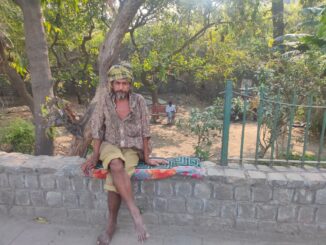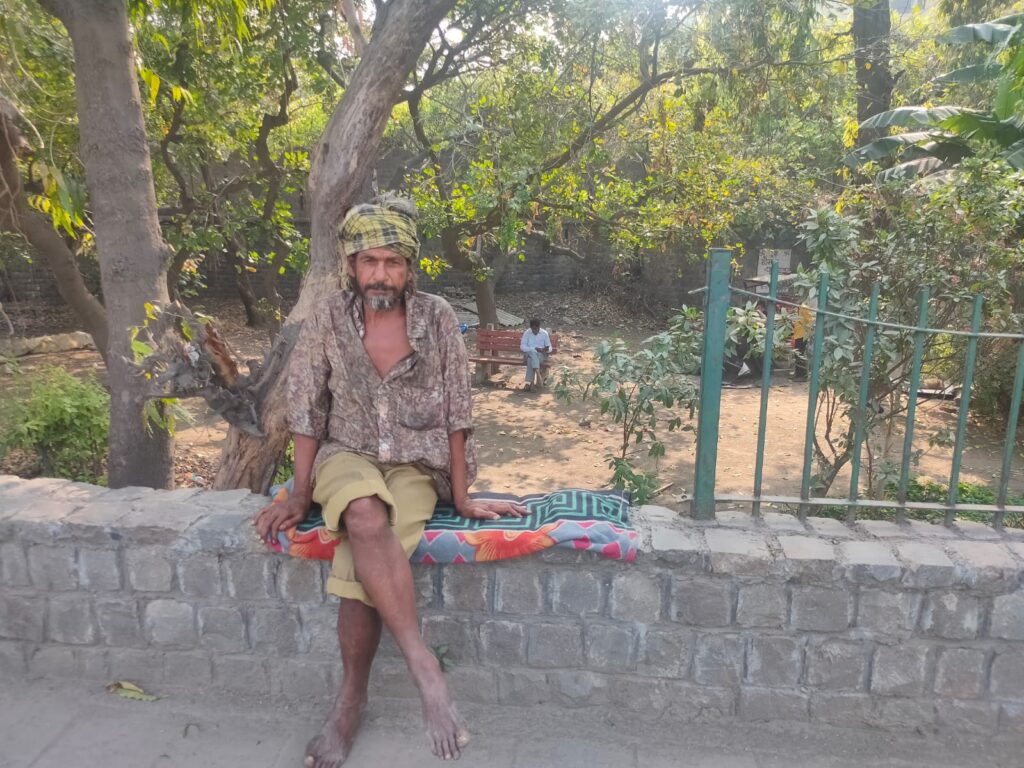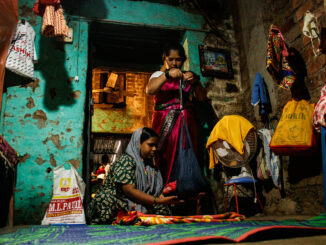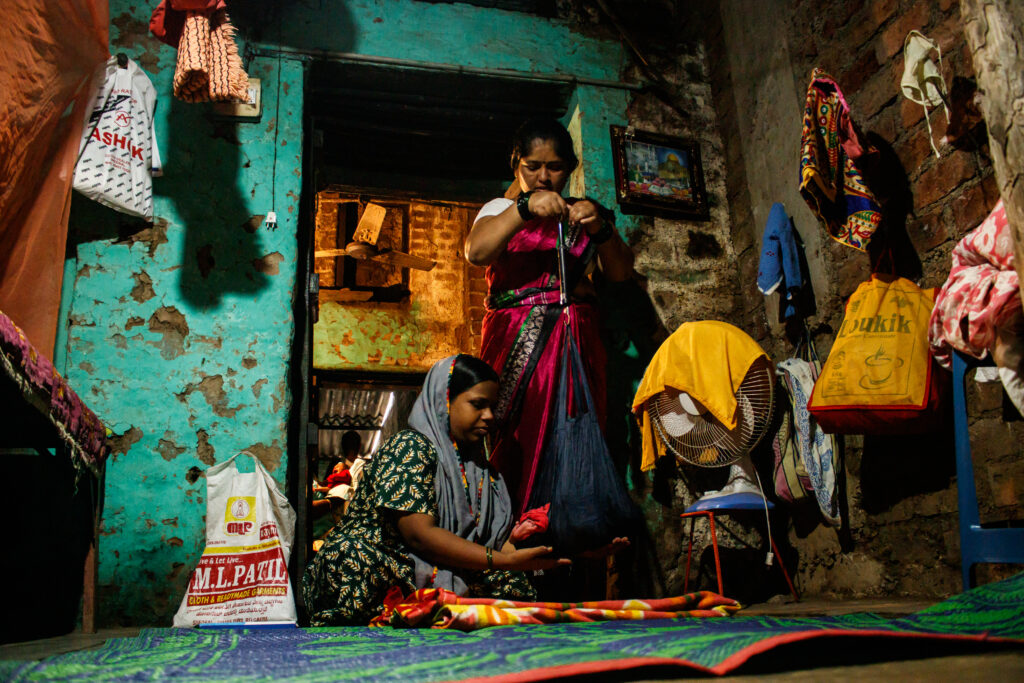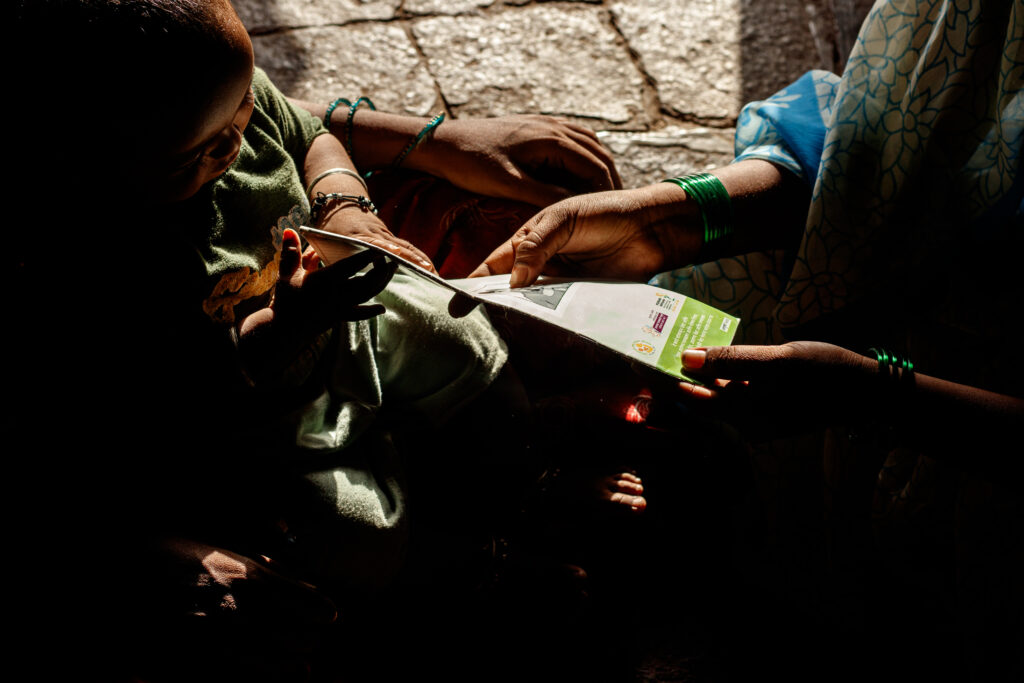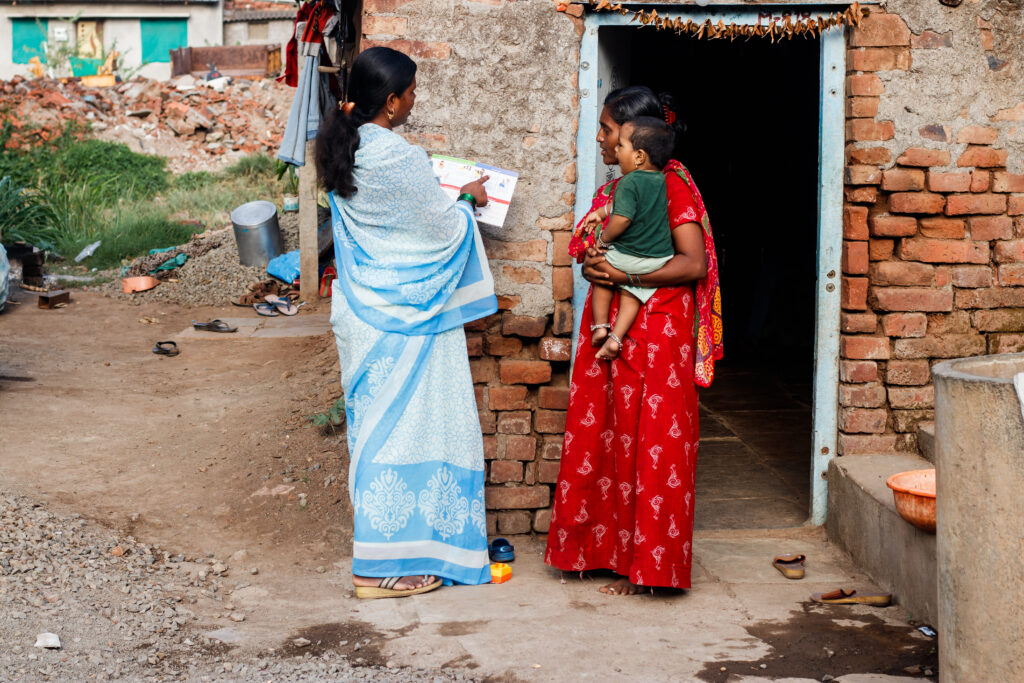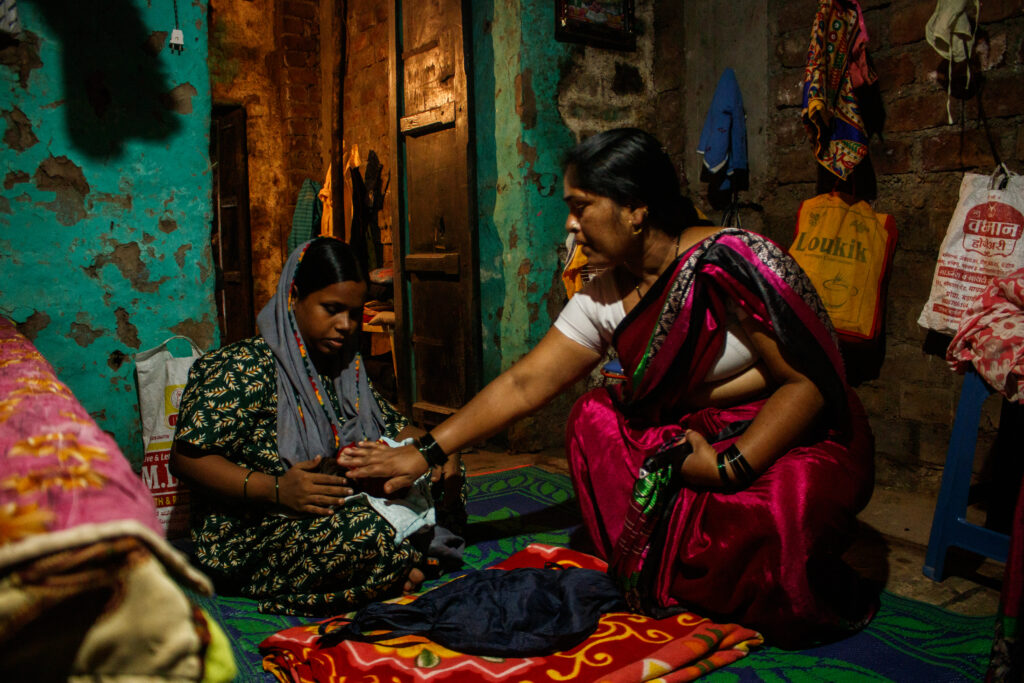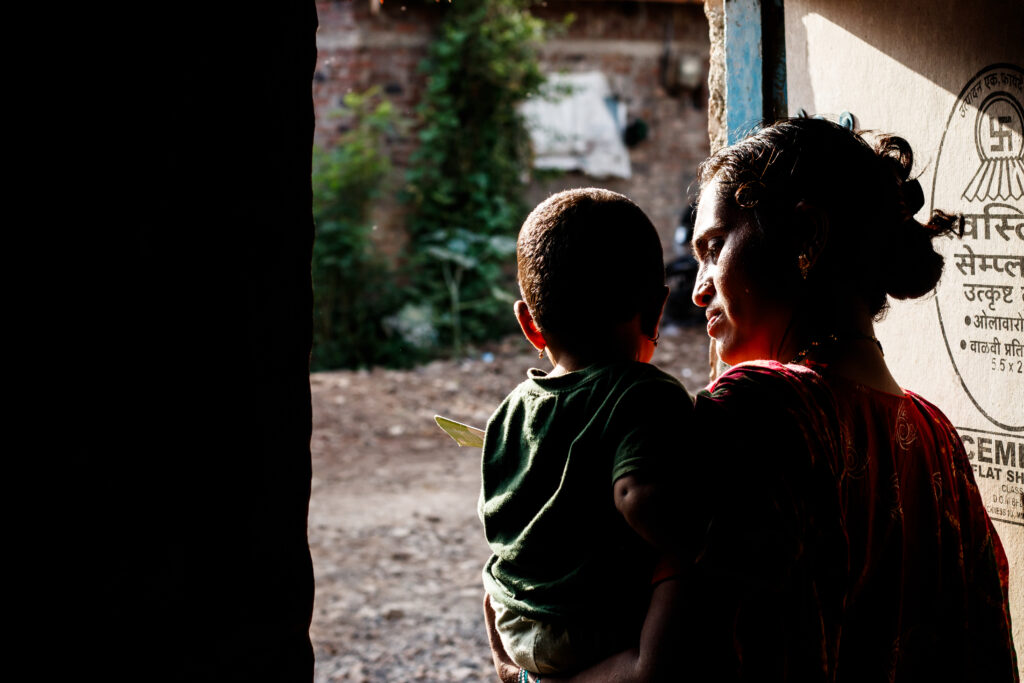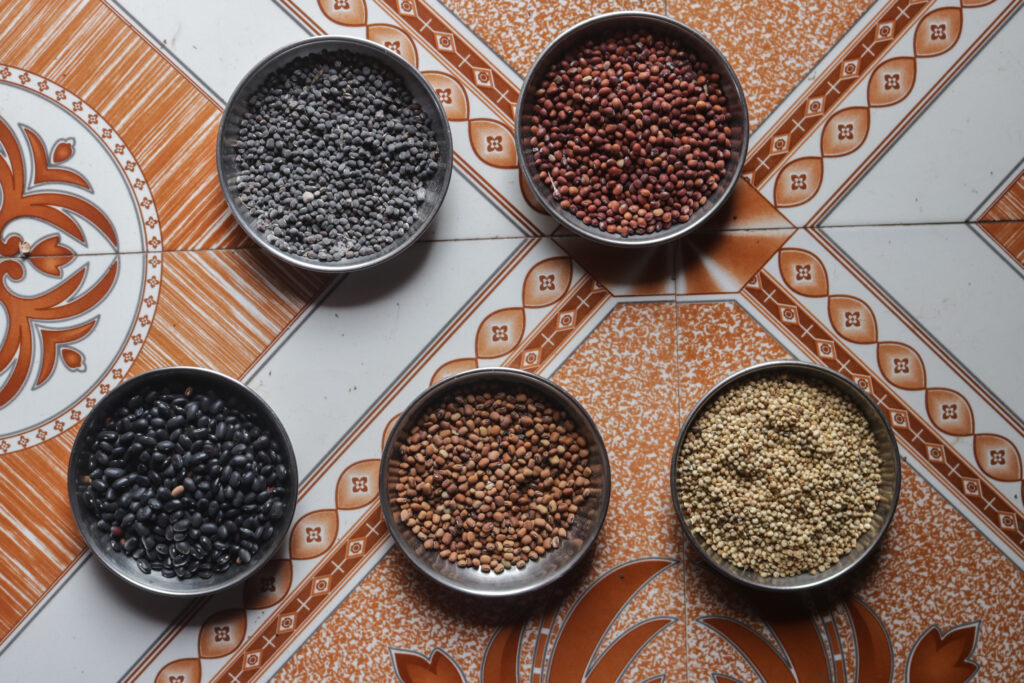
Eighty-eight-year-old Sakharam Gaikwad never anticipated that farming sugarcane would become a bittersweet endeavor.
In 1972, a drought hit the western Indian state of Maharashtra. Considered one of the most devastating disasters of the last century, it affected 20 million people (57 percent of the state’s rural population) and 5.6 million—or 40 percent of—cattle.
The disaster prompted Gaikwad to move in the direction of his fellow villagers toward sugarcane cultivation. At the time, the young farmer had been growing indigenous rice varieties, and a wide collection of nutritious millets, including sorghum, finger millet, pearl millet, and little millet.
Starting in the late 1960s, he began using chemical fertilizers to cultivate hybrid sugarcane and sorghum varieties. Seeing bumper harvests in shorter periods of time, he said, “Farmers abandoned the traditional millets and moved rapidly toward sugarcane.” Year after year—during the 1970s—farmers began cultivating sugarcane in his village of Jambhali until an overwhelming majority were involved with the fast-growing plant.
Everything went well for Gaikwad until climate change disasters started destroying his crops. For instance, a 200 percent increase in rainfall in one week in October destroyed the majority of his sugarcane. In 1.5 acres, he managed to harvest 70 tons. He has noticed a drop over the last five years by almost 50 tons, costing him $1,830 per year.
However, stories like those of Gaikwad are increasing across India, with most farmers moving either toward commercial crops, like soybean and sugarcane, or hybrid varieties of indigenous crops. Last year, India reported producing 500 million metric tons of sugarcane worth 1.18 trillion Indian Rupees ($14.26 billion).
Meanwhile, in 2019, India cultivated 80 percent of traditional and hybrid millet in Asia and 20 percent of the world’s production. Grains like traditional millets that can withstand rapidly changing weather are on the decline in India. With India now having convinced the United Nations to declare 2023 the International Year of Millets, what does it mean for Indian farmers?
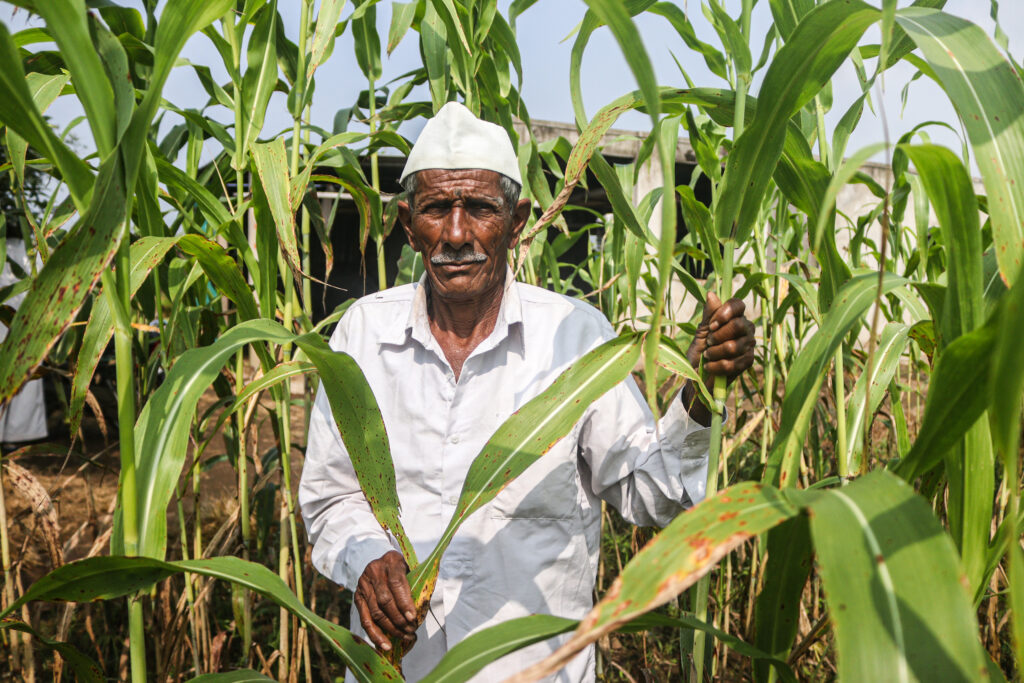
Farmers Say UN Designation Isn’t Enough
“Just announcing that this year is dedicated to millets doesn’t change things for the farmers,” said Amol Naik, a farmer, activist, lawyer and a member of the All India Kisan Sabha, the farmers’ wing of the Communist Party of India (Marxist). He and farmer Narayan Gaikwad, the younger brother of Sakharam Gaikwad, suggested a series of reforms to ensure fair prices to farmers.
“In several villages, we can’t even find the seeds of traditional millet varieties,” said Narayan Gaikwad, a 77-year-old activist and a farmer from Jambhali. “The government should conduct awareness sessions in villages and help farmers by ensuring a better price for millet and making traditional seeds more accessible to farmers.”
Gaikwad added that traditional seeds have become so rare that many farmers need help understanding the difference between a traditional variety and a hybrid variety.
“Just declaring a year dedicated to millets is not going to help.”
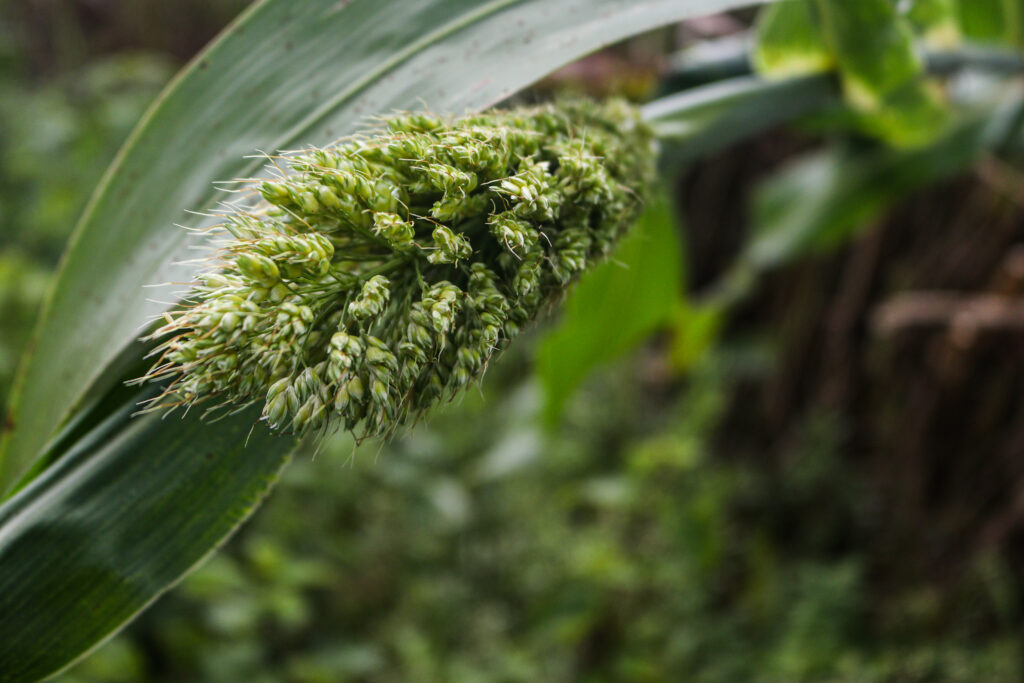
Why Millet Cultivation Declined
Traditional millet once was a staple food in India, helping people remain healthy. India, the sixth-highest sorghum-producing country globally, produced 4.2 million metric tons of sorghum last year, almost a 40 percent decline since 2010. Some reasons for the decline include fluctuating local climatic patterns, changing eating habits, rising heat waves, and a shift to non-native remunerative commercial and food crops.
Starting at age 17, the first crop 76-year-old Vasant Kore learned to cultivate was kar jondhala (indigenous sorghum). However, retaining the heirloom seeds wasn’t lucrative enough for many farmers. “The hybrid sorghum varieties yield double the produce as compared to traditional ones in almost half the time, whereas kar jondhala takes five months to grow,” explained Kore, who recalled hybrid sorghum varieties were introduced in his region in the 1970s.
Farmer Sambhaji Shingade, 61, from Sangli’s Garjewadi village, recounted the start of the commercialization of farming. “Many multinational corporations bought seeds from poor farmers at a meager price, developed hybrid varieties, and started selling them to the same farmers at much costlier prices. We were robbed of our traditional wealthier seeds.”
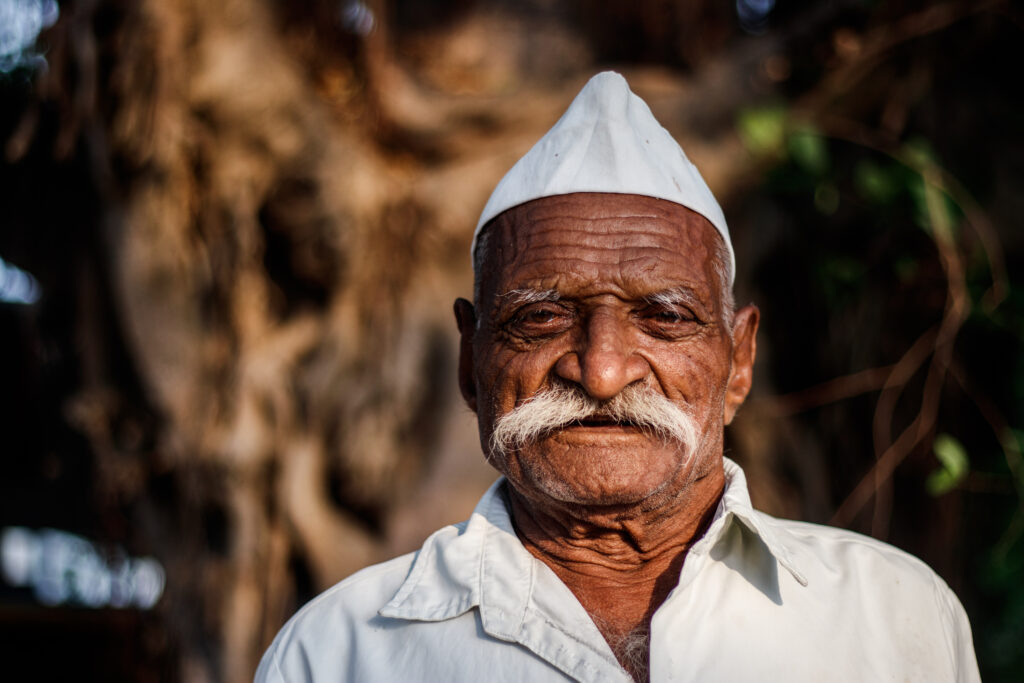
The rapid commercialization didn’t happen in a day. “Every government has systematically destroyed farming,” Gaikwad said. “Farming now relies on multinational companies who make these hybrid seeds and fertilizers.”
Despite the benefits of growing traditional varieties, farmers have been forced to move toward commercial crops.
“Farmers are encouraged to grow sugarcane and are rewarded by assuring them that the sugar mills will buy it,” Gaikwad said. “On the other hand, farmers are rarely given subsidies for cultivating traditional varieties that keep everyone fit, and there’s no market for such crops, forcing farmers to move toward sugarcane.”
“Also, most millets cultivated today are genetically modified hybrid varieties that promise a higher yield, but aren’t climate resistant. So, preserving the traditional varieties becomes even more critical, as they will completely vanish in a few years,” warned Vijay Jawandhiya, an activist and farmers’ leader from Maharashtra.
Gaikwad added chemical fertilizers and pesticides are now a must.
“Over the years, more and more hybrid varieties were developed and as farmers got used to them and fertilizers, the prices [of hybrid seeds and chemical fertilizers] eventually skyrocketed, making farming unaffordable.”
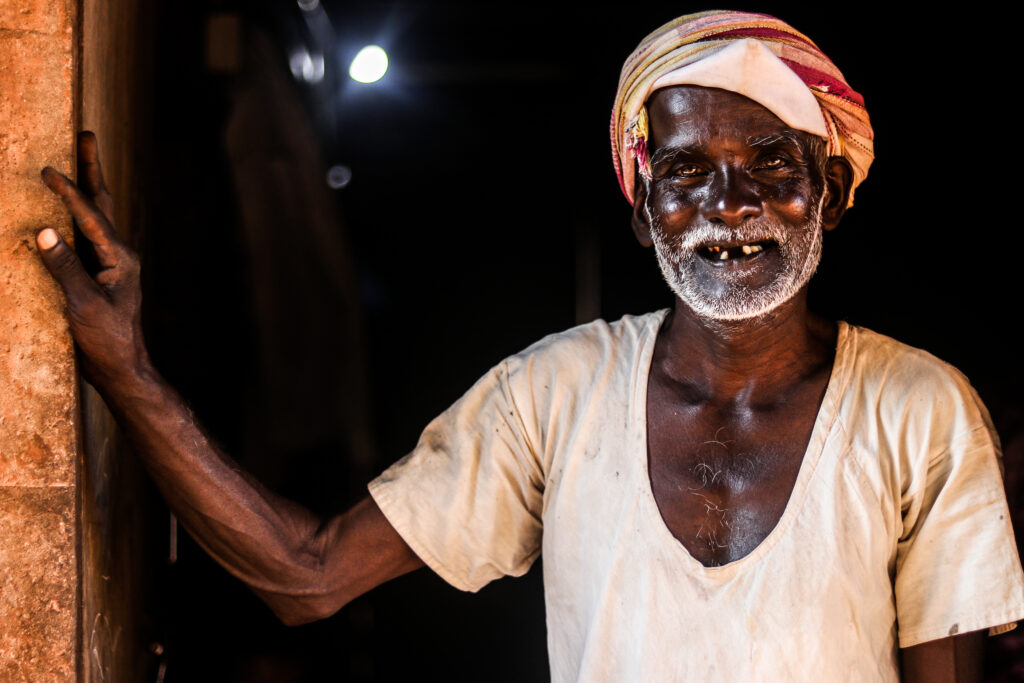
Plentiful Water and Fertilizers
When irrigation facilities started reaching Gaikwad’s village in 1964, he said everyone thought their problems had ended. “Little did they know it was the beginning of the troubling times.”
With water becoming readily available, everyone shifted to sugarcane. “Back then, there was not a single sugar mill in the region,” he said. By 2020-21, India had 506 operating sugar mills. Moreover, sugarcane requires tremendous use of chemical fertilizers and pesticides. The amount used varies based on soil conditions and climatic changes, among other factors. Also, it takes 1,500 to 2,000 liters of water to produce a kilogram of sugar. An Indian government report warns, “Most of the country’s irrigation facilities are utilized by paddy and sugarcane, depleting water availability for other crops. Pressure on water due to sugarcane cultivation in states like Maharashtra has become a serious concern, calling for more efficient and sustainable water use through alternative cropping pattern.”
Despite its problems, farmers say they aren’t left with an option. “Cultivating the traditional variety is unaffordable. It takes a lot of time to grow, and even the production is less,” Gaikwad explained.
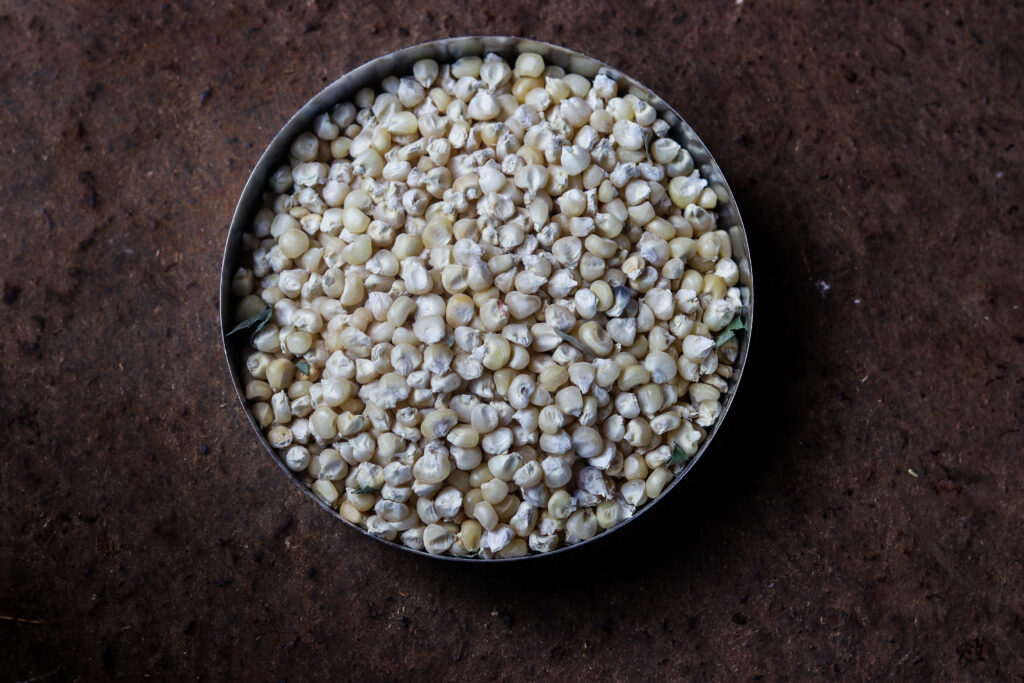
Traditional sorghum varieties don’t require chemical fertilizers and are resistant to extreme climate events like heat waves. In addition, they can grow in drought conditions and water-logged soils, withstand salinity and alkalinity, and they are resistant to pests. Saline soil has excessive amounts of soluble salts, which hamper plants’ ability to absorb water. Meanwhile, alkaline soil contains high levels of sodium, calcium and magnesium.
Most farmers face this dilemma of losing their hybrid crops to climate change disasters or reporting lesser produce with traditional crops.
Dongarsoni farmers found a workaround by growing a lot of grapes, which unfortunately require tremendous use of insecticides, herbicides, and other toxic pesticides. “The farmers here earn a lot of money from grapes by exporting them. So they can retain the traditional crops in their vacant land,” explained farmer Gulab Mullani, 41, who follows the same approach.
However, a significant challenge for farmers like Gaikwad, who long ago abandoned the crops, comes from birds and animals eating produce. “One farmer cannot report sustainable profits if other farmers predominantly cultivate cash crops. This is because the majority of the millet produce remains a feed for birds and wild boars,” Jawandiya explained. “When there are large patches of farmland with the same traditional crop, the loss caused by birds and animals isn’t felt much.”
Another reason for abandoning millet is its lower price and lack of a regulated market, often pushing farmers into losses. “With the rise of cash crops, the labor cost increased, but the prices of traditional grains haven’t increased much. Hence, agricultural laborers aren’t paid enough for harvesting millets, forcing farmers to shift to other crops,” Jawandhiya added.
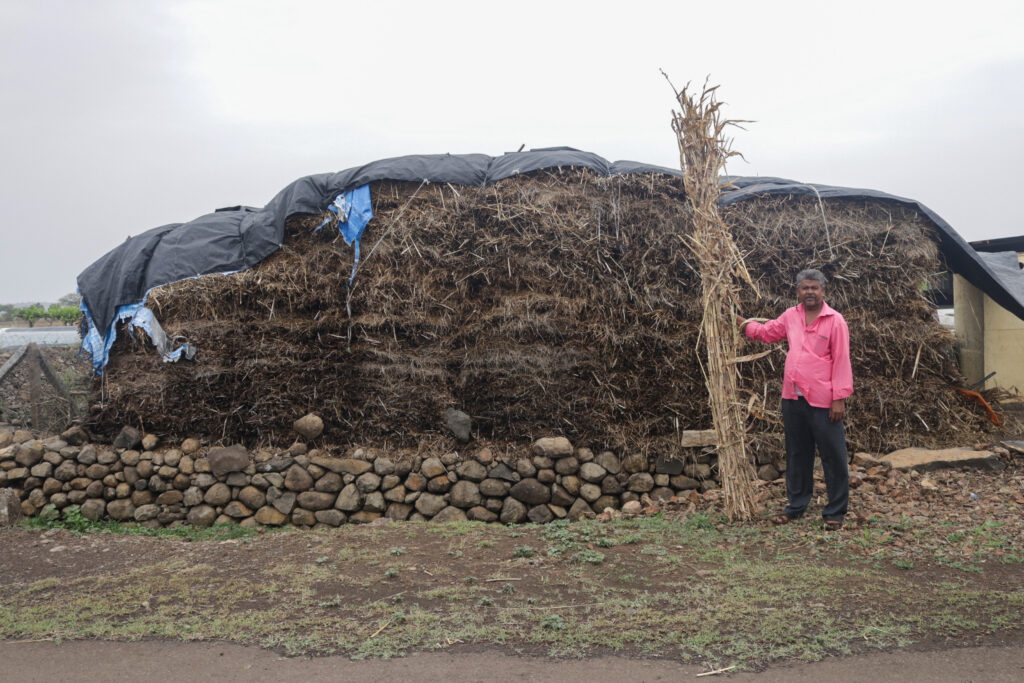
Building Sustainable Food Systems with Millet
Millets, especially sorghum, were once a staple food in India and Africa. About 500 million people in more than 30 countries depend on sorghum as a staple food, according to the International Crop Research Institute for the Semi-Arid Tropics. The study found that over two-thirds of Indians consume foods deficient in protein and essential micronutrients, such as zinc, iron and vitamin A.
Cultivating indigenous millets has been lifesaving for drought-affected farmers like Kore. They help control blood sugar levels, are rich in iron, fiber, and proteins, and improve heart health, among other benefits, over the hybrid varieties. In addition, their pest-resistant ability, tolerance to higher temperatures, and need for minimal rainfall make them an environment-friendly crop.
Moreover, traditional millet varieties don’t require chemical fertilizers. “Even if you apply chemical fertilizers and pesticides, the crop will still grow in their natural timing only,” Kore said with a laugh, “so there’s no point wasting money.”
Gaikwad uses a simple observation to predict the rising cases of several lifestyle diseases. “Just look at what people eat.”
Earlier, eating flatbreads made of traditional sorghum, finger, and pearl millet was the norm. Finger millet, compared with other millets, remains a rich source of minerals and protein, as well as calcium. In addition, it has been used to raise iron levels in anemia patients.
Now, they are replaced with hybrid wheat or rice varieties. Today, 3.5 billion people globally are at risk of calcium deficiency, with more than 90 percent of them from Asia and Africa.
Plus, millet stalks remain an excellent cattle feed. “Many farmers have retained the traditional millets only for their cattle,” Gaikwad said. Cattle dung, a much cheaper source of organic fertilizer, keeps the soil nutrient-rich and helps build sustainable farming cycles.
“With millets gone, this entire cycle has collapsed,” Kore said.
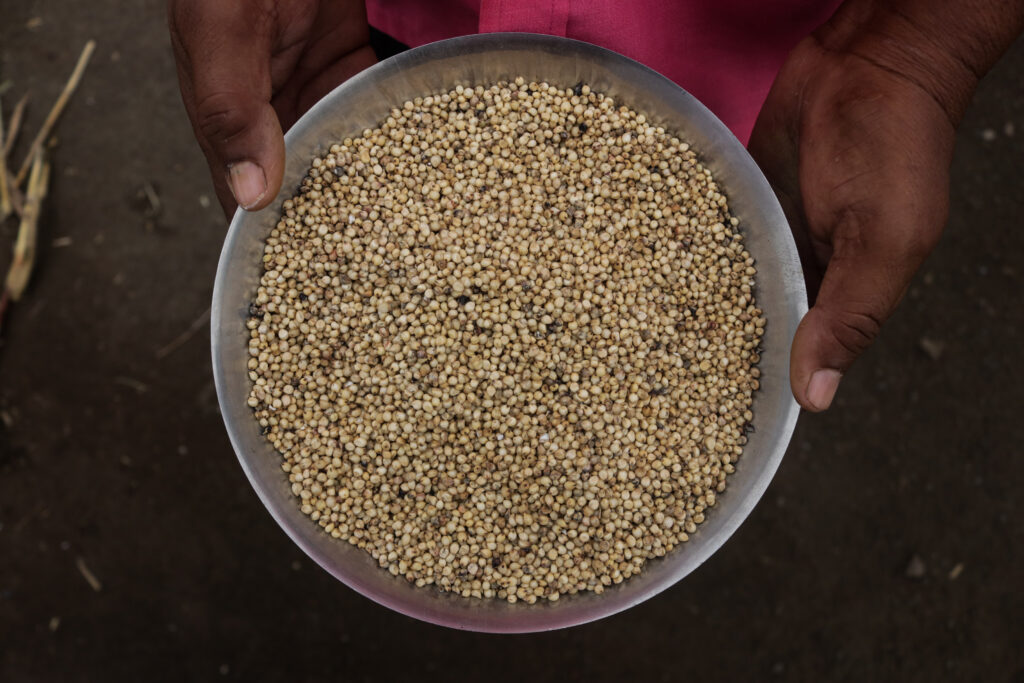
Spike In Chemical Fertilizers
While the hybrid varieties promise a higher yield in lesser time, they require maintenance through the application of pesticides and chemical fertilizers. Kore added he has found it difficult to cultivate crops without using chemical fertilizers on the field where he grows hybrid varieties, commercial crops or grapes. “The soil is now used to chemicals and hybrid varieties. I think it will take several years to reverse this.”
His observation is a stark reality as globally, the consumption of nitrogen fertilizers reached 190.81 million metric tons in 2019, a 312 percent rise since 1965. Also, chemical pesticide usage has surged over 57 percent since 1990, as its consumption has now reached 2.7 million metric tons.
While this helps a crop survive to a certain extent, it has been found to provoke oxidative stress that causes Parkinson’s Disease, respiratory and reproductive tract disorders, Alzheimer’s Disease, different types of cancer, and much more, according to a 2018 study in the journal, Environmental Toxicology and Pharmacology.
Looking at the younger generation’s experience with chemical farming, Kore’s brother, Shivaji, 67, of Dongarsoni village, never cultivated the hybrid sorghum. “Of the three acres of land I own, I have reserved an acre only for kar jondhala,” he says.
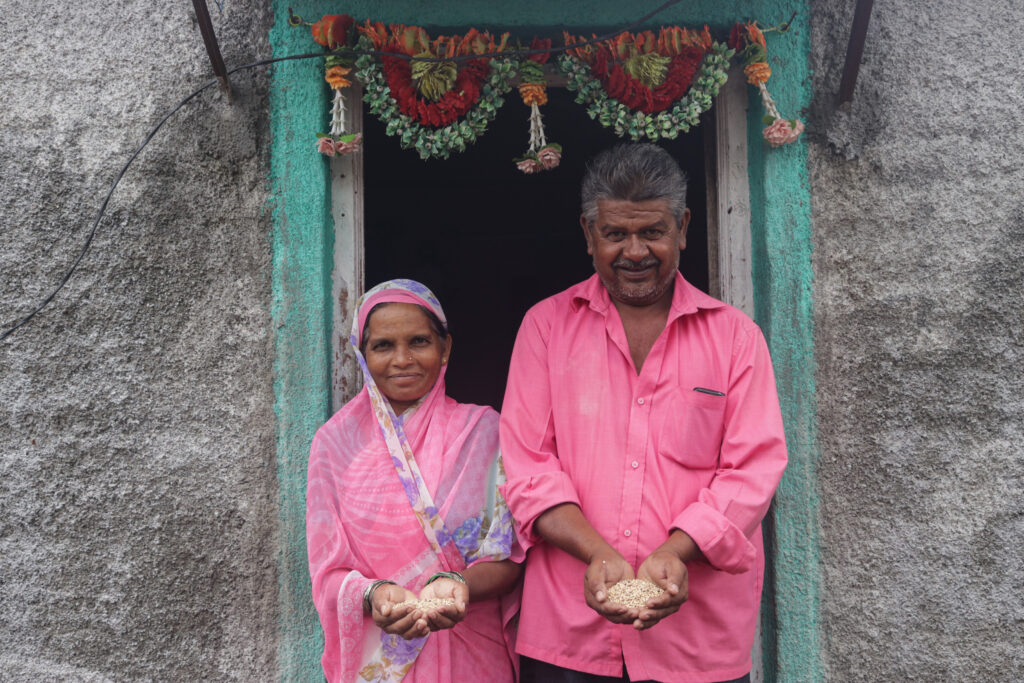
Preserving a Heritage
While kar jondhala fetches almost double the price of hybrid varieties, it has much less demand. “The younger generation doesn’t know its importance,” Kore said. He recalled the 1970s when traditional sorghum was treated as a currency. “People would exchange it for buying daily items.”
Farmers, like Kore, have now taken it upon themselves to help preserve this crop. In villages like Dongarsoni, farmers still use the traditional barter system to exchange heirloom seeds.
Gaikwad, however, said not all hope is lost. “It’s not that all the traditional varieties have completely disappeared. They are still there, but one will have to travel a lot to find them because very few farmers have preserved them.”
Farmers like Kore and Mullani have now taken it upon themselves to preserve the traditional millets. “I will keep cultivating traditional sorghum until the time I die,” Kore said, smiling as he gestured to his field.
Sanket Jain is an independent journalist based in the Kolhapur district of the western Indian state of Maharashtra. He was a 2019 People’s Archive of Rural India fellow, for which he documented vanishing art forms in the Indian countryside. He has written for Baffler, Progressive Magazine, Counterpunch, Byline Times, The National, Popula, Media Co-op, Indian Express and several other publications.

